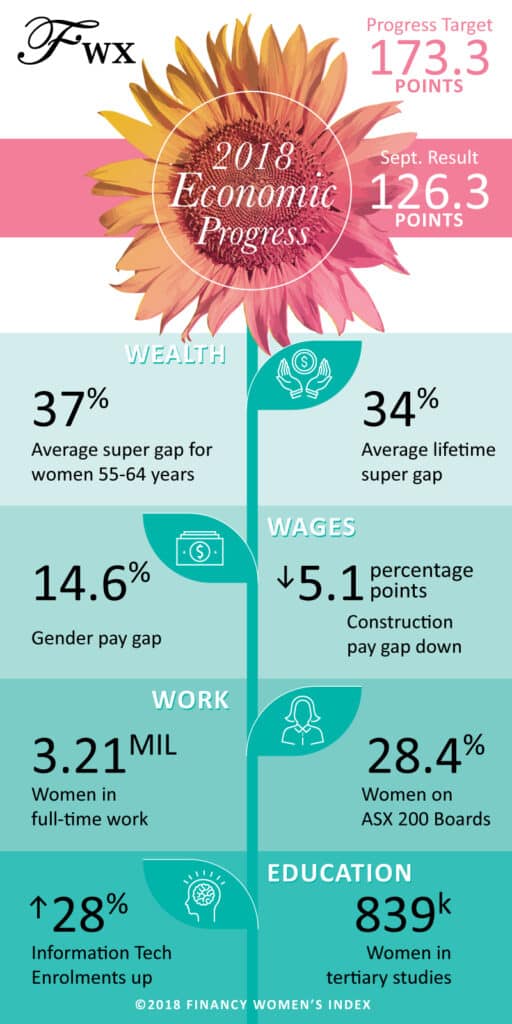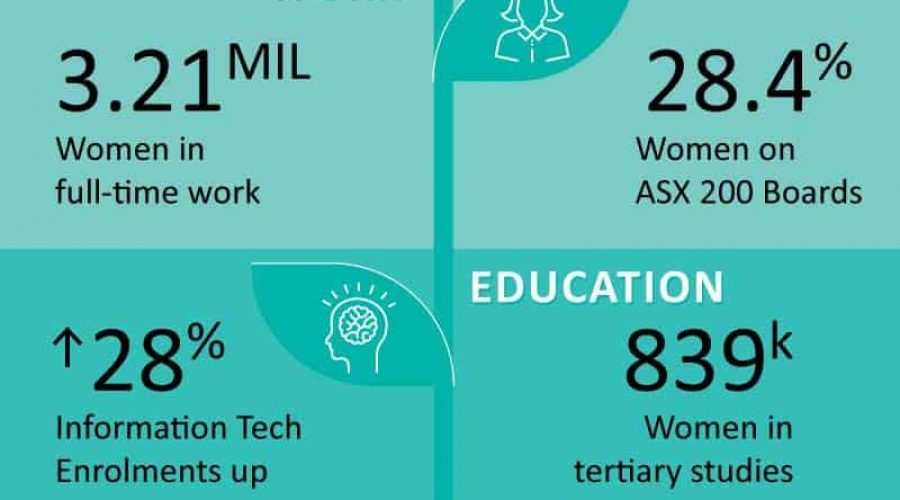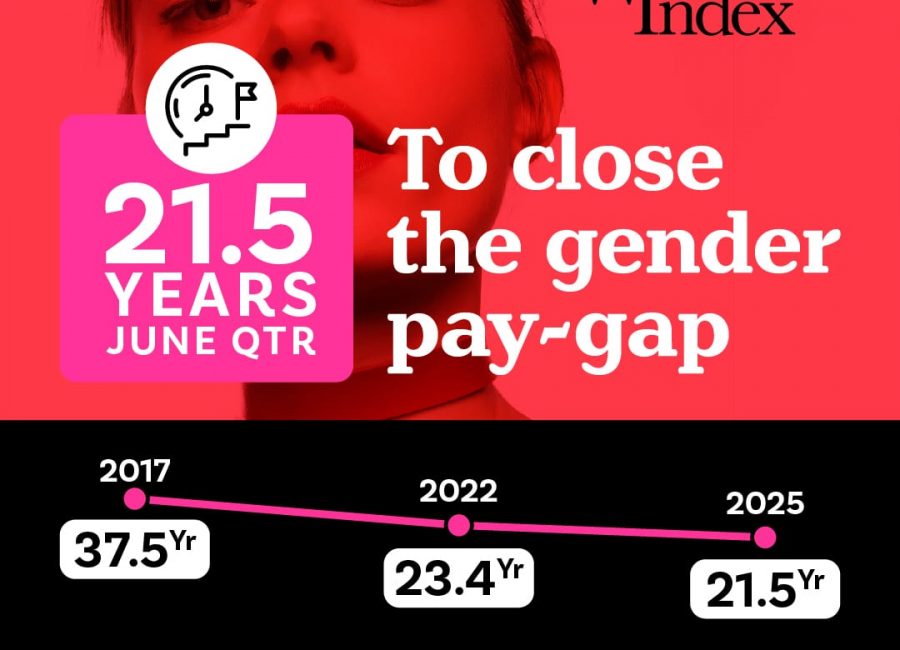Three records were broken in 2018 to help drive The Financy Women’s Index economic progress score higher but the fact remains the result could have been a lot better.
We have over 3.21 million women in full-time employment, record women pursuing higher educational qualifications and a 20-year low in the national gender pay gap.
But disappointingly the rate of progress in educational attainment is not being matched in the labour force, the superannuation gender gap remains too wide and female board appointments stalled in the second half of 2018.
The Financy Women’s Index (FWX), which measures economic progress across education, work, pay, leadership positions, and superannuation, rose 0.2 points in the December quarter to 126.3 points and reflects a 4.4 percentage point improvement on 121.9 points in December 2017.
When the December result of the Women’s Index is compared to the FWX Progress Target of 173.3 points, it shows that on the basis of current trends we’re still at least a decade away (37 per cent short) from achieving economic equality in Australia.*
AFA Inspire National Chair, Kate McCallum said it’s encouraging to see that the latest Financy Women’s Index score is up, though disappointing that the notch is so small.
“I’m sure many are as frustrated as I am that this is all we can wring out of what must be millions of hours of effort in mentoring, coaching and training.
“The Index reveals that Australia is screaming out for systemic change. In no other endeavour in business would we continue to invest so much precious time and energy into initiatives that gain so little traction in improving the pathways to women’s economic progress.”
The number of women occupying ASX 200 board positions is down slightly to 28.4 per cent with the pace of progress stalling in the second half of 2018.
OneVue Managing Director Connie McKeage said “although the percentage of women on the ASX 200 Boards has gone slightly backwards over the period it is fair to say that the financial services industry in particular has been challenged by the high level of regulatory uncertainty.
“The diversity objective remains top of mind for most Australian listed companies, however, as they continue to strive to get the right people into the right positions the deadline looms. As they say however better late than never and I remain confident we will get there in this financial year.”
The latest education data shows more women studying beyond high school and that male-dominated technical fields, which tend to provide pathways to higher paying careers, are increasingly sought after.
In 2017, there were 839,278 women and 673,401 men, representing 55 per cent v 45 per cent of student enrolments respectively.
Shane Oliver chief economist AMP Capital said while it was pleasing to see that the economic wellbeing of women is continuing to improve, more needs to be done to support women in the workforce.

“Higher levels of female participation in tertiary education along with changing community attitudes and
expectations provide confidence that this will continue.
“But we need to do more in making it easier
for women to participate as much as they would like in the workforce and to ensure they receive all the same opportunities and rewards as men.”
The number of women in full-time employment hit a high of 3.21 million in the second half of 2018, outpacing the level of male full-time employment growth.
The participation rate also increased to 60.5 per cent in October 2018, from 60.1 per cent 12 months earlier.
The three biggest employers of women in terms of growth rates over 2018 were Construction up 23 per cent, followed by Public Administration and Safety up 22 per cent and Mining up 20 per cent.
The sectors that recorded a widening of the gender pay gap in 2018 were Health Care and Social Assistance up 2.2 percentage points, Other Services (consisting of personal care services; religious, civic, professional services) up 1.9 percentage points, and Mining up 0.9 percentage points.
The sectors which reduced their gender pay gaps in 2018 were Construction down 5.1 percentage points, Accommodation and Food Services fell 2.5 percentage points and Arts and Recreation Services dropped 3.7 percentage points.
Overall improved wages and job outcomes for women at the start of 2018 helped the national gender pay gap fall to 14.6 per cent in 2018, from 15.2 per cent in 2017.
The gender gap in superannuation persists with women falling at 34 per cent short compared to men at retirement age.
Despite this, AMP Financial Planning adviser Dianne Charman said 2018 had been a better year for women’s superannuation.
“New measures like the rollover of unused concessional contribution caps have the potential to make a big dent in the gap between men and women’s average super balances over time,” Ms Charman said.
“Changes like this directly address the issue of women’s interrupted work patterns.”












